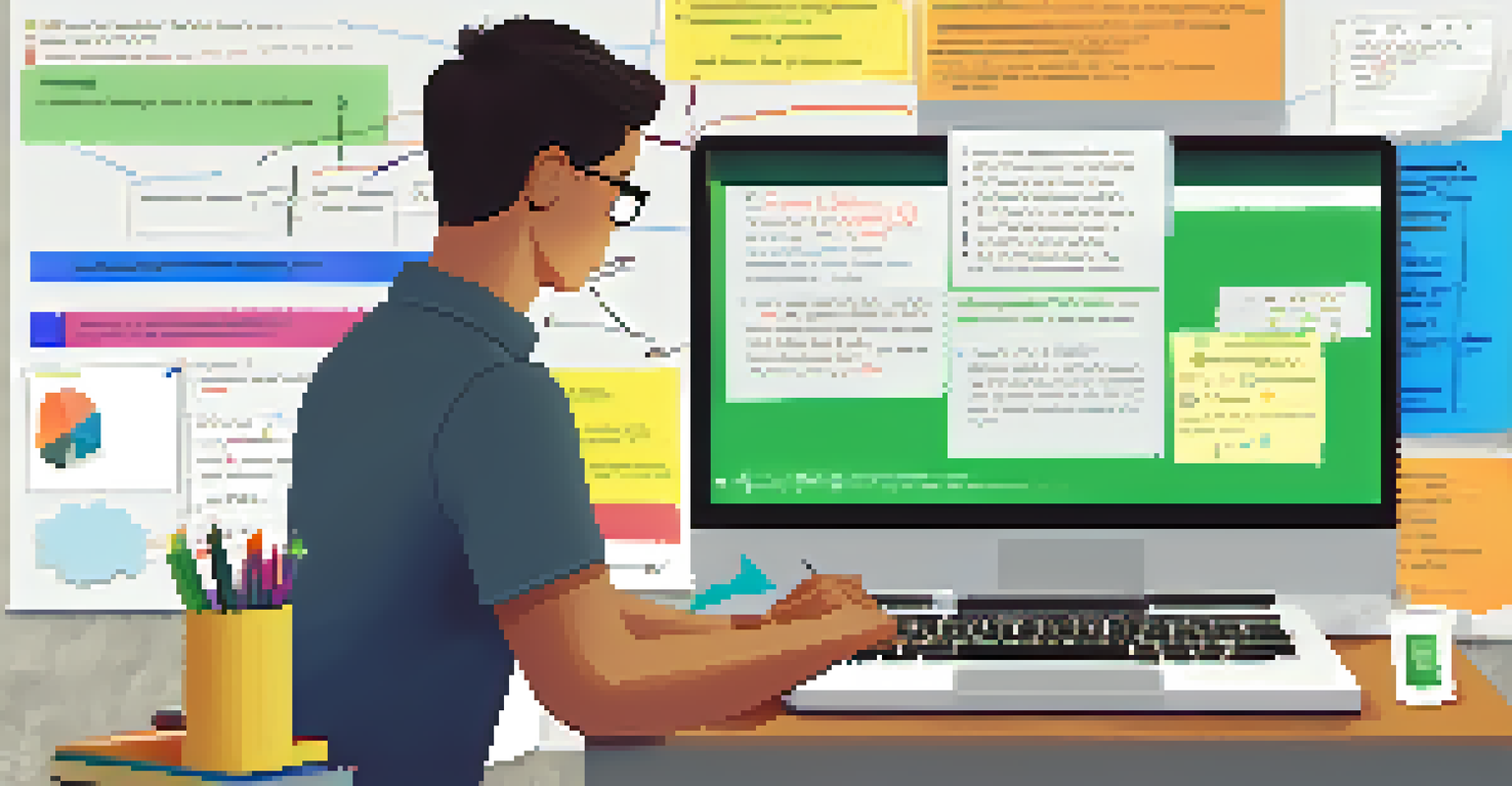The Neuroscience of Group Dynamics in Online Learning

Understanding Group Dynamics in Online Learning Environments
Group dynamics refer to the interactions and behaviors that occur within a group. In online learning, these dynamics can significantly affect how individuals learn and engage with the material. Understanding these dynamics requires a look at how people communicate, collaborate, and influence one another in digital spaces.
The whole is greater than the sum of its parts.
In virtual classrooms, elements such as trust, conflict, and cohesion play crucial roles in shaping group interactions. For instance, when students feel safe to share their thoughts, they are more likely to engage fully, leading to richer discussions. This creates a positive feedback loop where engagement fosters further participation.
Neuroscience helps us understand these interactions by examining how our brains respond to social stimuli. For example, when students collaborate effectively, their brains release oxytocin, a hormone associated with bonding. This not only enhances group cohesion but also boosts overall learning outcomes.
The Role of Social Interaction in Learning
Social interaction is a cornerstone of effective learning, especially in online settings. Studies show that learners who interact with their peers are more likely to grasp complex concepts and retain information. This is because social engagement stimulates cognitive processes that enhance understanding.

Moreover, when students work together, they often encounter diverse perspectives that challenge their thinking. This can lead to deeper insights and a more comprehensive understanding of the subject matter. It's like having a conversation with a friend who sees things differently; their viewpoint can illuminate aspects you hadn't considered.
Trust Boosts Group Learning
When students trust each other, they are more likely to share ideas and take risks, enhancing overall learning outcomes.
From a neuroscience perspective, these interactions activate brain regions linked to problem-solving and critical thinking. Engaging in discussions or collaborative projects can help students form new neural connections, making learning more effective and enjoyable.
The Impact of Trust on Group Cohesion
Trust is essential for fostering a productive online learning environment. When students trust each other, they are more likely to share ideas and take risks in their learning. This trust creates a safe space for exploration and experimentation, crucial for effective learning.
Alone we can do so little; together we can do so much.
Research indicates that trust can enhance group performance as members feel more comfortable expressing their thoughts. For example, a group project where members trust one another often results in higher-quality outcomes compared to a group lacking that trust. The synergy created in trusting environments leads to richer collaboration.
Neuroscientifically, trust activates brain pathways associated with positive emotions and a sense of safety. When students feel trusted, their brain's reward system is engaged, reinforcing their commitment to the group and the learning process.
Conflict Resolution: A Key to Healthy Group Dynamics
Conflict in group settings is inevitable, but how it's managed can significantly impact learning outcomes. Constructive conflict can lead to deeper understanding, while unresolved issues can create tension and disengagement. Thus, it's crucial for online learners to develop conflict resolution skills.
When conflicts arise, addressing them openly can foster an environment of mutual respect and understanding. This process not only resolves the immediate issue but also strengthens relationships within the group. Think of it as pruning a plant; sometimes you need to cut away the dead leaves for the healthy ones to thrive.
Social Interaction Enhances Learning
Engaging with peers fosters deeper understanding and retention of complex concepts through diverse perspectives.
Neuroscience suggests that effective conflict resolution engages areas of the brain involved in empathy and reasoning. This engagement can lead to enhanced emotional intelligence, allowing learners to navigate interpersonal dynamics more successfully in the future.
The Neuroscience of Motivation in Group Learning
Motivation is a driving force in any learning environment, and it plays a significant role in group dynamics. In online learning, intrinsic motivation often fuels engagement and collaboration among peers. When students are genuinely interested in the subject, they are more likely to contribute positively to group activities.
Group goals can further enhance motivation, as members support one another in achieving common objectives. This collective effort can create a sense of belonging and accountability, making each individual feel like a vital part of the team. It’s similar to being on a sports team where every player has a specific role to play.
From a neuroscience viewpoint, motivation triggers the release of dopamine, a neurotransmitter linked to reward and pleasure. This chemical response not only encourages participation but also reinforces the desire to engage in future learning activities.
The Influence of Technology on Group Interactions
Technology has transformed how we learn and interact, particularly in online settings. Tools such as discussion forums, video chats, and collaborative platforms enable students to connect and share ideas regardless of geographical barriers. This accessibility can enhance group dynamics by bringing together diverse perspectives.
However, technology can also pose challenges, such as miscommunication or feelings of isolation. It's essential for educators to foster a sense of community through these tools, ensuring that students feel connected and engaged. This can be achieved by promoting regular interactions and encouraging peer feedback.
Technology Shapes Group Dynamics
While technology facilitates connectivity in online learning, it also requires mindful use to prevent miscommunication and isolation.
Neuroscience shows that the brain can adapt to new technologies, leading to changes in how we communicate and collaborate. Embracing these tools mindfully can enhance group dynamics and create more effective online learning experiences.
Creating an Effective Online Learning Community
Building a strong online learning community is crucial for enhancing group dynamics. This involves cultivating a space where students feel connected, valued, and motivated to participate. Strategies like icebreakers and team-building activities can help establish rapport and trust among group members.
Moreover, fostering a culture of feedback encourages continuous improvement and collaboration. When students feel comfortable providing and receiving feedback, it not only enhances learning but also strengthens group cohesion. It’s akin to a potluck dinner, where everyone brings something to the table, enriching the overall experience.

The neuroscience of community underscores the importance of social bonds in learning. Strong connections activate brain areas associated with happiness and belonging, contributing to a positive online learning environment that promotes engagement and academic success.